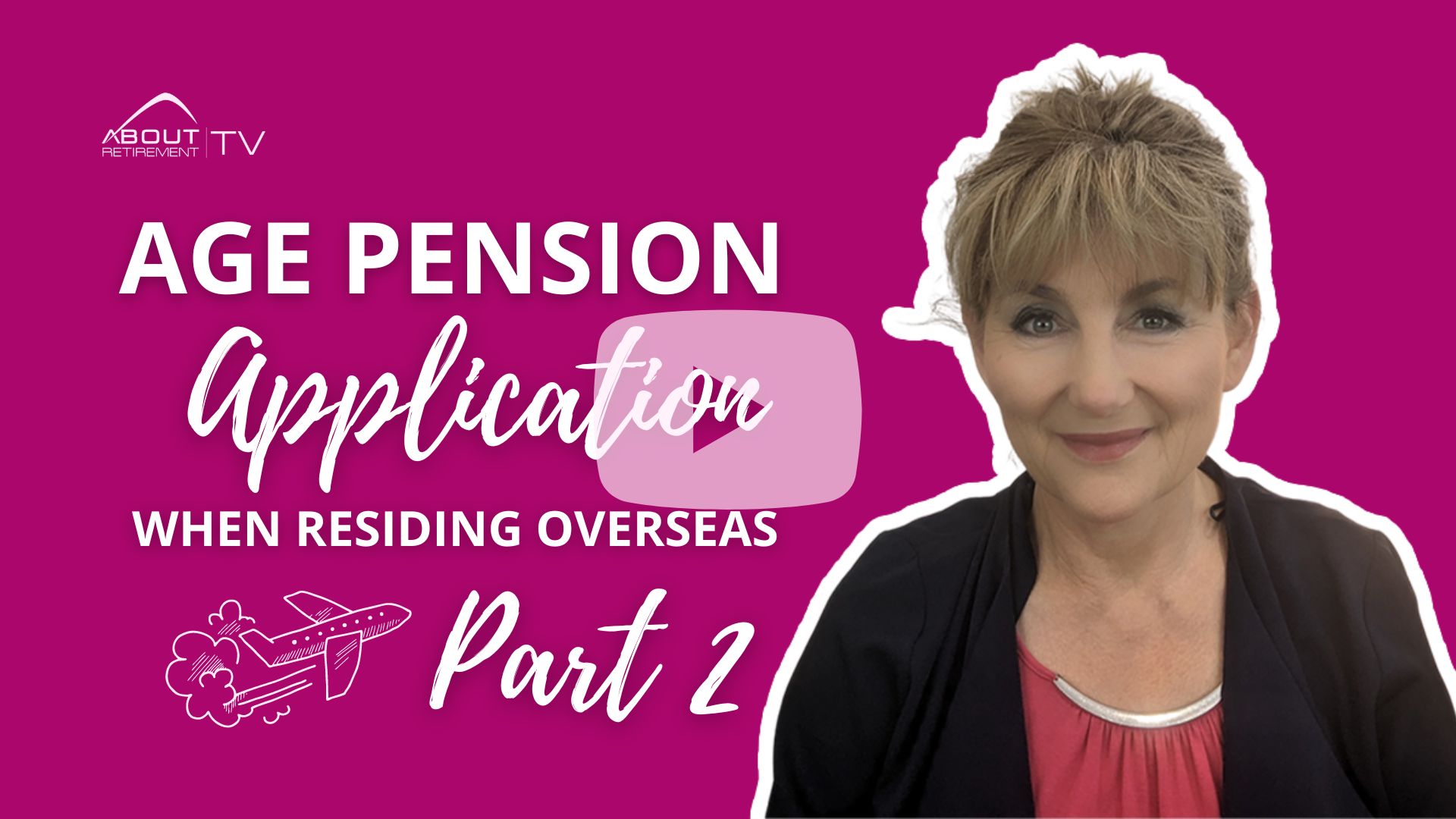
Age Pension application when residing overseas – part 2
The idea of spending retirement years in warm countries of Asia or South America appeal to many. Sometimes it is curiosity to live in a foreign country, but often it is economics. Australia is a great country to build your wealth while working, but it appears to be on an expensive side in retirement. Cost of living has been going up dramatically, but this is the case across the globe, so Australia is not unique or special in this area.
But still the fact remains that many, especially Asian countries such as Bali, Philippines, Thailand, Malaysia can appeal to many people in Australia. An additional benefit is obviously a relatively short flight and costs of that travel is not excessive, with many Asian airlines flying to Australia at low costs.
Another area that appears to be of interest to Australians where costs of living could also be reduced is South America. The top 5 countries are: Uruguay, Chile, Argentina, Peru, Ecuador.
Whichever country you choose, it is always recommended to visit this country first, spend some time to see if the culture, climate, language, economy, medical care, housing, costs of living – that all those items are to your satisfaction, and you feel comfortable your retirement will be enhanced in comparison to staying in Australia.
One of the prime issues for many when considering living overseas is application for Age Pension and accessing this service from the other country.
I have already explained the process of applying for Age Pension while here in Australia with some of my personal tips, from my own experience while working with the Centrelink office on behalf of many of my clients. So check: “How to prepare an application for Age Pension”
The second part to view is: “How to claim Age Pension if you are overseas.” This covers migration for retirement to countries that have a Social Security Agreement with Australia.
And today we will cover the very requested topic of Age Pension application when retiring in a country that does not have that Social Security agreement with Australia, and those are most Asian and South American countries mentioned before.
Towards the end, I will go over few examples how those listed rules apply in real life.
So, let’s jump into our topic, applying for Age Pension when living overseas in a country that does not have Social Security Agreement with Australia.
To be eligible to receive the Australian Age Pension whiles residing overseas, the following legislative requirements need to be taken into consideration:
1. Residing in Australia
2. Proportional portability
3. “Former resident” rules
Let’s go over those points one by one:
1. Residing in Australia
The general rule is that on the day of logging your claim for Age Pension or any other pension and allowances for that matter, you are required to be in Australia, reside in Australia AND be on of the following:
- Australian citizen
- Holder of a permanent visa or
- Holder of a Special Category Visa.
The only time when you can apply for Age Pension while not in Australia is if you reside in a country that has Social Security Agreement with Australia.
Once you received your Age Pension in Australia, you can carry the pension overseas, subject to portability rules. And for Age Pension the portability is unlimited with special conditions that
“All former residents have a 24-month waiting period before their pension is portable outside Australia”.
However please be aware that after 26 weeks your payment will become proportionate based on your working life residence (AWLR).
2. Proportional portability
What is Proportional Portability? Well…, your Age Pension can be paid to you if residing overseas indefinitely (as explained before based on portability special condition), however after a period of 26 weeks of residing overseas, your rate of Age Pension payment will be calculated proportionally to you working life residence in Australia.
This is your working life residence in Australia that refers to any or all periods from the age of 16 to Age Pension age when you are considered an Australian resident. Although it is named “working life residence” it does not actually require you to be working or even paying taxes, but it does look at your Australian residency history and years as a resident of Australia.
From 1st July 2014, in order to qualify for the full Age Pension payment, your working life of residence in Australia is required to be 35 years (420 months).
Before the requirement was 25 years.
3. “Former resident” rules
This rule prevents former residents of Australia from returning to Australia, claiming the Age Pension and immediately moving overseas again to live permanently overseas. With this rule, as explained before by portability rules, you are required to remain in Australia for at least 2 years (24 months) before being eligible to take the Age Pension payment overseas with you.
Let’s view some examples:
Alfredo is 67, has just retired from work, has lived in Australia for 20 years. For his retirement he would like to return to his motherland in Philippines, where he still has majority of his family, plus cost of living is obviously lower than in Australia.
Alfredo is in Australia, therefore eligible to apply as a residing in Australia citizen and he can take his Age Pension to Philippines indefinitely.
Centrelink will apply the means testing to calculate his eligibility and the outcome of both Income and Assets test confirm he is eligible for the full Age Pension payment.
- For the first 6 weeks while overseas Alfredo will be receiving the full payment
- After 6 weeks the telephone allowance and any pension supplements will stop based on temporary absence
- After 26 weeks Alfredo’s Age Pension will be recalculated based on his working life residence in Australia, which is 20 years (240 months). Therefore, Alfredo’s Age Pension payment will be proportioned to the number of months lived in Australia.
Sylvia is 67, she retired 5 years ago when she moved to Bali. She loves the weather, low cost of living, plus there are many Aussie retirees there, so she has a lovely circle of friends. But now Sylvia would live to apply for Age Pension. Prior to leaving in Bali, Sylvia lived and worked in Australia for 45 years, so she is confident she would be eligible.
Living overseas for 5 years for Centrelink purposes Sylvia is no longer regarded as an Australian resident, therefore Sylvia’s steps are as follows:
- Sylvia has to return to Australia to meet her residency rules requirements.
- Sylvia can apply for Age Pension while in Australia.
- She needs to reside in Australia for two years to meet portability rules,
- Centrelink will calculate Sylvia’s eligibility based on Income and Assets Test and whichever test gives the lower outcome, this is the level of Age Pension payable,
- Based on both test, Sylvia is eligible for the full payment.
- After two years Sylvia can leave for Bali again and take her Age Pension with her
- For the first 6 weeks she will be receiving the full payment
- After 6 weeks the allowances and supplements will be removed
- After 26 weeks Sylvia’s Age Pension will be recalculated based on her working life residence in Australia. As Sylvia worked in Australia for 45 years, therefore even longer than the required 35 years, Sylvia’s Age Pension will not be reduced.
Rules for Social Security payments form overseas are very complex and they will be calculated based on your personal circumstances, so my recommendation is don’t just estimate it based on general rules. From the finance point of view, there are so many issues to take into consideration before you move overseas, such as:
- family home – should you keep it or sell it
- financial requirements of the other country you want to move into
- where to keep your bank accounts – in Australia or the other country
- what to do with super if you have any?
- Tax system in the other country
- Currency exchange
- Should you transfer your savings all in one hit or proportionally
This is just a list that I believe you should go over and receive the best financial advice you can. In addition, as mentioned before, you should also consider your social, medical, housing needs and provision in the other country, before you make this huge decision to move.
By: Katherine Isbrandt CFP®
Money Strategist & Retirement Planner
Principal of About Retirement






